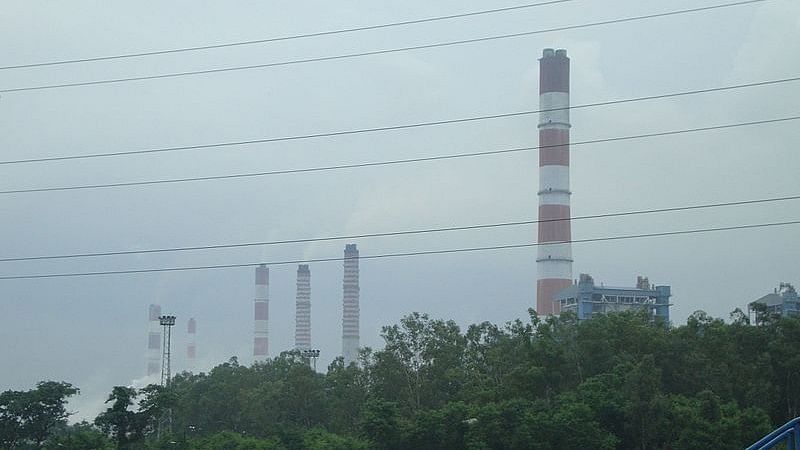
File photograph used for representational purposes only
Credit: Wikimedia Commons
Bengaluru: Days after NITI Aayog recommended to the government that thermal power plants need not install the flue gas desulphurisation (FGD) units, a new study has warned that such a step would need to increased air pollution as the units have proved to be effective in cutting emissions.
FGD units are meant to reduce sulfur dioxide (SO2), a toxic gas emitted during the burning of coal.
The gas is highly irritant and also leads to acid rain. In 2015, the Ministry of Environment, Forests and Climate Change (MoEFCC) introduced the rules for coal fired power plants (CFPP) to control SO2 and other gases.
However, the two-year deadline for retrofitting SO2 control technologies like FGD units has been extended four times. As the December 2024 deadline neared, the government extended it yet again to 2026. Finally, the Niti Aayog reported as recommending to the Centre to do away with the rule to install FGDs.
CREA's study said India emitted 4,327 kilotonnes of SO2 between June 2022 and May 2023, with CFPPs operated by Centre, state and private sector contributing nearly equal amounts of emission. "Post FGD implementation, emissions reductions of 65%, 69% and 60% (were recorded) in state, central and private sectors, respectively," it said.
The study flagged the dangers of SO2, a precursor to the formation of fine particulate matter (PM 2.5), which has been linked to severe health issues. "Exposure to high levels of SO2 can irritate the eyes, throat and lungs, aggravating conditions such as asthma and bronchitis. Long term exposure is associated with an increased risk of heart attacks, strokes and premature death," it said.
Manojkumar N, author of the CREA's study, noted that India's dependence on coal-fired plants will continue regardless of the installed capacity of renewable energy. "Projects for about 80 GW are in the pipeline. India has a chance to reduce SO2 and the continuous extension of the deadline is not helping it," he said.
The Niti Aayog's recommendation was ostensibly based on a draft report by the Council of Scientific and Industrial Research-National Environmental Engineering Research Institute. While the full report was not accessible, a Niti Aayog memorandum dated September 24 had the following findings from the report.
"Concentration of SO2 measured by 467 CAAQMS (continuous ambient air quality monitoring stations) operated by CPCB and 486 operated by TPP (thermal power plants) across India were analysed and it is found that, only 13 sites have highest SO2 levels beyond the prescribed limit of 80 microgram per cubic metre that too only in the fourth quartile range (less than 25% of data)," the memorandum said.
Manojkumar said while doing away with FGD unit installation may reduce cost of power temporarily, it will have a negative impact on the air quality. "The health benefits that come from installation and effective management of the FGDs far outweigh the costs incurred by the thermal plants," he added.